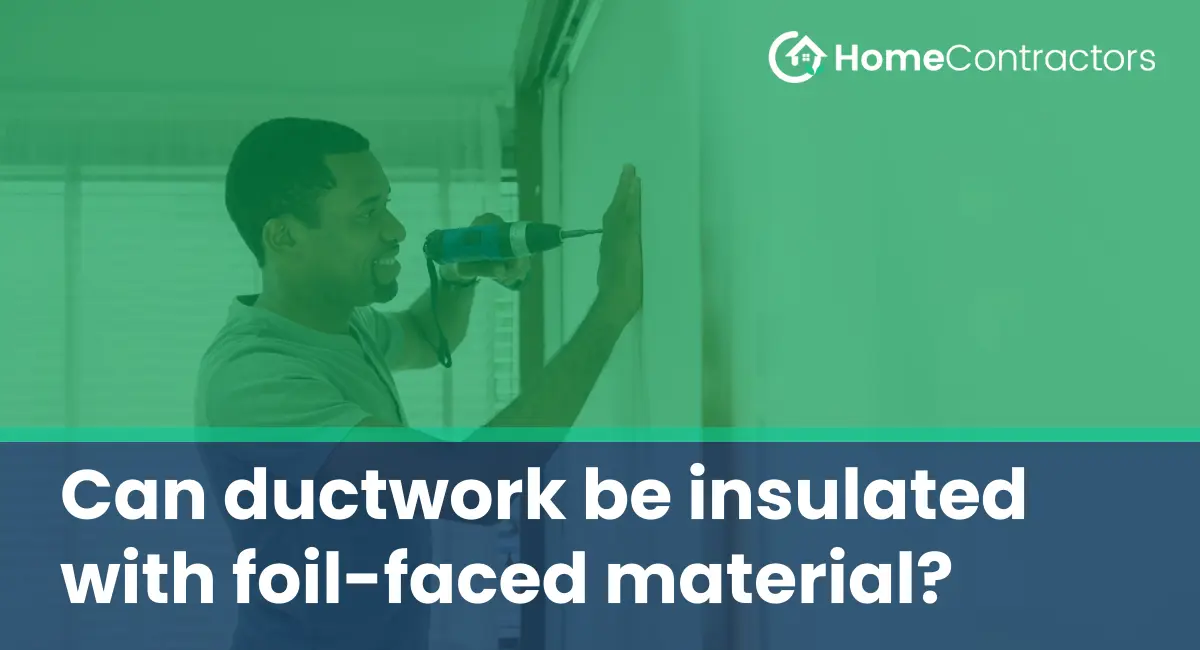Insulating ductwork is crucial for efficient heating and cooling in residential and commercial buildings. It helps prevent energy loss, reduces air leakage, and promotes better indoor air quality. While there are various insulation materials available, one popular option is foil-faced material. In this article, we will explore whether ductwork can be insulated with foil-faced material, its benefits, and considerations to keep in mind.
Understanding Foil-Faced Insulation:
Foil-faced insulation consists of a layer of foil on one side and a layer of insulation material, such as fiberglass or foam, on the other. The foil acts as a radiant barrier, reflecting heat back to its source, while the insulation material traps and slows down heat transfer through conduction. This combination makes foil-faced insulation effective in reducing heat loss or gain through walls, roofs, and floors.
Benefits of Foil-Faced Insulation for Ductwork:
- Thermal Efficiency: The foil layer in foil-faced insulation helps to reflect heat back into the duct, enhancing thermal efficiency. This can result in significant energy savings by reducing the amount of heating or cooling required to maintain desired temperatures.
- Moisture Resistance: Foil-faced insulation has a vapor barrier capability, which helps prevent moisture condensation within the ductwork. Excessive moisture can lead to mold growth or deterioration of the insulation, compromising indoor air quality and system performance. Foil-faced insulation can provide an added level of protection against these issues.
- Fire Resistance: The foil layer in foil-faced insulation provides a fire barrier, which can help retard the spread of fire. This is especially important in commercial buildings where fire safety regulations are stringent. Fire-resistant insulation can help buy time for occupants to evacuate and minimize property damage.
Considerations for Insulating Ductwork with Foil-Faced Material:
- Proper Installation: Proper installation is crucial to ensure the effectiveness of foil-faced insulation. The joints and seams should be properly sealed to prevent air leakage, which can undermine the insulation’s thermal performance.
- Compatibility: Foil-faced insulation may not be compatible with all types of ductwork materials. Before considering its use, it is essential to determine compatibility with the specific ductwork material and consult with professionals or manufacturers for guidance.
- Environmental Factors: Foil-faced insulation may not be recommended in certain environmental conditions, such as high humidity or extreme temperature fluctuations. These conditions can affect the integrity of the insulation or compromise its performance over time. It is important to consider the specific climate and environmental factors before opting for foil-faced insulation.
Insulating ductwork with foil-faced material can offer several benefits such as enhanced thermal efficiency, moisture resistance, and fire resistance. However, proper installation, compatibility with ductwork materials, and consideration of environmental factors are crucial. Before deciding on foil-faced insulation, it is advisable to consult professionals and consider the specific requirements of the building. With proper consideration and installation, foil-faced insulation can be a valuable addition to the ductwork, leading to energy savings and improved indoor comfort.
